Search
Remove Ads
Advertisement
Summary 
Loading AI-generated summary based on World History Encyclopedia articles ...
Search Results
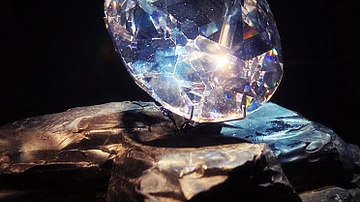
Definition
Koh-i-Noor
The Koh-i-Noor diamond (also Koh-i-Nur or Kūh-e Nūr) is one of the largest and most famous cut diamonds in the world. It was most likely found in southern India between 1100 and 1300. The name of the stone is Persian meaning ‘Mountain of...

Image
Koh-i-Noor Diamond (Replica)
An exact replica of the Koh-i-Noor, a 105.6 carat, oval-cut brilliant diamond. Mined in India, the stone is now part of the British Crown Jewels and kept in the Tower of London. (Chhatrapati Shivaji Maharaj Vastu Sangrahalaya, aka Prince...
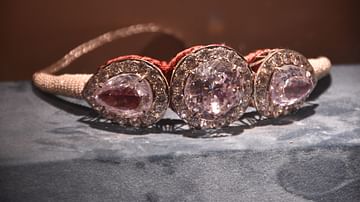
Image
Koh-i-Noor Armlet (Replica)
A replica of the enamelled gold armlet presented to Queen Victoria (r. 1837-1901) in 1850 after its acquisition from the Punjab following the Anglo-Sikh Wars (1845-49). The central stone was the Koh-i-Noor diamond, which the queen had recut...
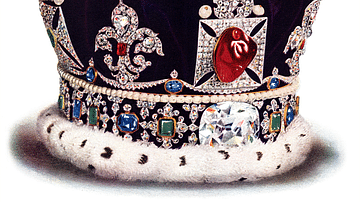
Definition
British Crown Jewels
The Crown Jewels of the monarchy of the United Kingdom of Great Britain and Northern Ireland are today kept in the Tower of London and date mostly to the 17th century, with a few later sparkling additions such as the Koh-i-Noor and Cullinan...
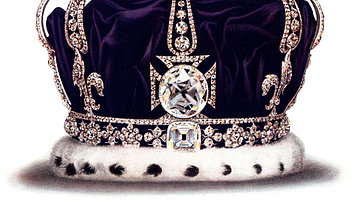
Image
Queen Mary's Crown with Koh-i-Noor Diamond
Queen Mary's Crown, part of the British Crown Jewels. The crown was created in 1911 CE. The central stone is the Koh-i-Noor diamond which is now part of the Crown of Queen Elizabeth the Queen Mother and which is sometimes removed for Elizabeth...
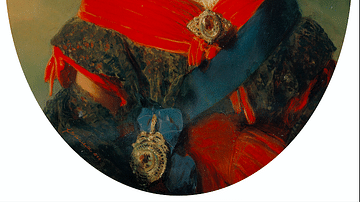
Image
Queen Victoria Wearing the Koh-i-Noor
An 1856 painting by Franz Xaver Winterhalter of Queen Victoria (r. 1837-1901). The queen is wearing a pendant with the Koh-i-Noor diamond. The Koh-i-Noor is a 105.6 carat, oval-cut brilliant. Mined in India, the stone is now part of the British...
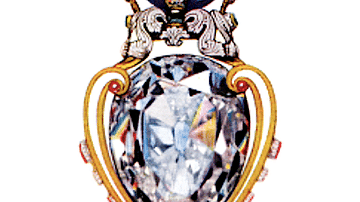
Definition
Cullinan Diamond
The Cullinan Diamond was discovered in Transvaal, South Africa in 1905 and presented as a birthday gift to Edward VII of England (r. 1901-1910) by the Transvaal Government. It weighed well over 3,000 carats, making it the largest gem-quality...
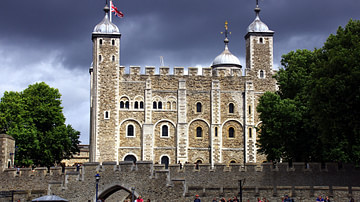
Definition
Tower of London
The Tower of London is a castle located in London alongside the River Thames which was first built by William the Conqueror from c. 1077 and significantly added to over the centuries. Often referred to in England as simply 'the Tower', it...
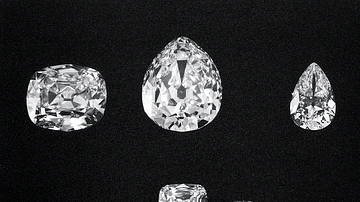
Image
Cullinan Diamonds I-IX
A 1908 photograph of the nine largest stones cut from the Cullinan diamond which was discovered in Transvaal, South Africa in 1905. The stones are each named Cullinan I to IX after the owner of the mine in which it was found. Cullinan I is...
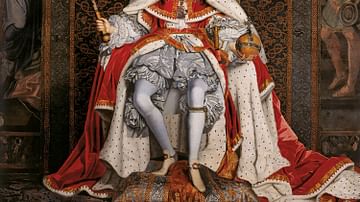
Article
The Coronation Ceremony of the British Monarchy
The coronation ceremony of the British monarchy as we know it today involves many elements that have been a part of the pageantry ever since the 11th century. Such features of the ceremony carried out in Westminster Abbey since 1066 have...